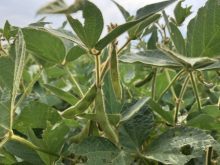Oats growers will need to watch for stem rust within the next couple weeks, especially in Manitoba and eastern Saskatchewan.
Most oats varieties grown on the Prairies have stem rust resistance, but a few years ago two races of stem rust appeared that can attack all Canadian oats varieties.
The presence of those two races, named NA67 and NA76, adds considerably to the odds that oat growers could suffer yield losses again this year because of rust.
Agriculture Canada plant pathologist Tom Fetch said surveys of oats crops in Manitoba last year showed yield losses of five to 30 percent because of stem rust. NA67 and NA76 would have caused a significant portion of those losses.
Read Also

No special crop fireworks expected
farmers should not expect fireworks in the special crops market due to ample supplies.
“It’s all over and it’s a pretty widespread thing,” he said, describing the prevalence of the two newer races of stem rust.
Rust spores are blown onto the Prairies from the United States. Once an oats crop is infected, it usually takes about 10 days for signs of infection to appear. Stem rust typically appears in crops in late June or early July.
Fetch said rust needs high humidity or dew to flourish on oats plants, conditions more common in eastern Saskatchewan and Manitoba.
If necessary, growers can fight rust with fungicides. Tilt is registered for crown rust, but will control all races of stem rust, including NA67 and NA76.
The best control is gained by applying the fungicide soon after the infection is noticed, Fetch said. However, farmers will need to take into account things like the cost of spraying and the anticipated value of the oats crop when deciding whether to apply a fungicide.
He said Tilt gives about two to three weeks of control and then loses its effectiveness.
One of the best defences is to plant resistant varieties, but none are available for NA67 and NA76. Public plant breeders are developing varieties resistant to those two races, but it will be at least four years before they are commercially available to prairie growers, Fetch said.
Seeding as early as possible is another way to avoid or reduce the effects of stem rust damage.














